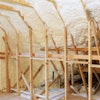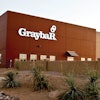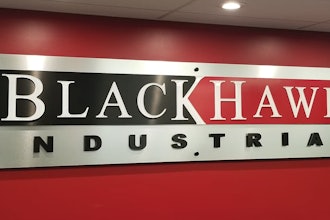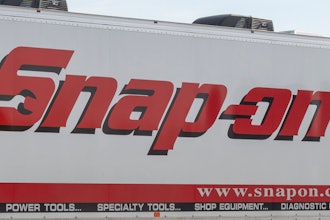1E-Commerce Checklist for Electrical Wholesalers
Contents
The Wholesale Distribution Customer Base 2
Current State of E-Commerce
in Electrical Wholesaling 3
Electrical Contractor Technology
Benchmarking Survey 4
E-Commerce Checklist for Electrical Wholesalers 5
1. Application-Based Search and Order Entry 5
2. Transaction Management and Fulfillment 5
3. Channel Consistency and Expansion 5
4. Real-Time Product Updates 5
5. Managing Manufacturer Product Diversity 6
6. Self-Service Resources 6
Embracing the Market Opportunity
to Survive and Thrive 6
E-Commerce Checklist
for Electrical Wholesalers
In the business-to-business (B2B) marketplace for the electrical industry, the identification, distribution and
sale of products requires exceptional precision to meet the requirements of manufacturers, retailers, building
contractors, maintenance operators, and other specialty wholesalers. The reason for this precision is due
mainly to three factors:
→ breadth of product selection to meet needs of industrial, building, and consumer applications
→ overlay of product- and application-specific criteria and regulations
→ complexity on the provisioning of installation and maintenance services
A recent hybris-led Electrical Wholesaling E-Commerce Audit of 200 electrical wholesale companies located
throughout the U.S., found that when it comes to procurement experiences for their buyers, electrical whole-
salers fall short in offering the kind of e-commerce procurement experience B2B buyers have come to expect.
How Electrical Wholesalers Can Respond
to the Diverse Needs of Buyers with More
Potent E-Commerce Solutions
2E-Commerce Checklist for Electrical Wholesalers
In addition, electrical wholesalers have yet to em-
brace multi-channel e-commerce strategies that can
ultimately enhance their print catalogs, websites and
physical location offerings with extended and time -
lier customer service. Being “behind the times” with
respect to delivering a multi-channel commerce
experience may limit electrical wholesalers’ ability
to achieve the growth and customer loyalty found in
other sectors such as consumer commerce.
Occasional buyers – individual electricians and small company
owners who order parts for specific projects, often using a
mobile device or desktop computer. These professionals:
→ expect a “consumer-like” online experience featuring rich
content, descriptive product attributes and purchasing
decision support such as product comparisons, reviews,
videos, and high-quality photos
→ search for products based on application rather than product
names or SKUs and commonly use the search window first
when trying to find a product
Commercial buyers – individual electricians or companies
working with contractors, subcontractors and teams in the
field, who submit their parts orders by cell phone or two-way
radio to an office, and typically have a fairly immediate need.
These professionals:
→ demand an easy-to-use interface with powerful search
capabilities to quickly locate standard part numbers and
enable rapid order fulfillment
→ value speed of order placement and ease of completing
transactions quickly. This may include offering on-line
order with will-call pickup
→ require self-service and prefer placing their orders directly
(in a manner as simple as a typical consumer transaction)
or via a readily available call center that supports orders,
questions, or related transactions
This paper summarizes the findings of the audit and
offers guidance on how electrical wholesalers can
respond to the changing needs of their buyers and
build robust, multi-channel e-commerce solutions
that are in line with customer expectations. It also
outlines best practices for evaluating e-commerce
technology vendors and gives electrical wholesalers
a checklist of key elements to look for in a platform
that will deliver sustainable business benefits.
The Wholesale Distribution Customer Base
In electrical supplies distribution there are essentially three types of buyers. Each has different business needs and purchasing
behavior that drives how and when they interact with a distributor.
Professional procurement managers – professionals respon-
sible for maintaining procurement systems and fulfilling
orders accurately and systematically. They may work with
product management personnel in specifying component
parts for a product line or a custom product design or with
field personnel who submit requisitions against authorized
item listings. These managers:
→ require accurate product descriptions, order consolidation
for fulfillment efficiencies and achievable SLAs in fill rates
and quality control and expect computer-assisted inventory
replenishment for recurring orders
→ have pick lists of hundreds of items, including nested or
kitting requirements, and may have internal part/SKU
listings that can be filled by multiple vendors that meet
the component specifications
→ need high speed and simple interfaces, with spreadsheet
uploads or portal interfaces – including part numbers and
SKUs to accelerate ordering and fulfillment – with integration
into other enterprise systems
→ expect the ability to configure product attributes, retrieve
relevant pricing, and obtain quotes when dealing with
products that are more complex to order than a simple
part listing
→ insist on validation and confirmation of order status
throughout the buying process
3E-Commerce Checklist for Electrical Wholesalers
Current State of E-Commerce in Electrical Wholesaling
The Electrical Wholesaling E-Commerce Audit found that whole salers are not equipped to meet the needs of today’s buyers who
increasingly rely on e-commerce to quickly locate and purchase the products they need. Though 94 % of the audited companies
had websites, only a select few offer a fully functional e-commerce experience.
The audit evaluated the following e-commerce factors:
E-Commerce Functionality – the ease of doing business
with electrical wholesalers online showed major gaps, up
to and including a complete lack or e-commerce capability:
The 200 companies audited were represented by 203
websites, due to multiple brands owned by a few large
companies
Nearly half did not feature e-commerce functionality
▪ two wholesalers had no website at all
▪ another eight had websites that were “under
construction” or otherwise unavailable
▪ 84 websites invited customers to contact the
company to place an order with forms via fax
(rather than by email or online)
Search and Navigation – business customers want to quickly
locate specific products that are relevant to their needs. The
hybris audit found that:
98 % of the functioning sites examined allowed
customers to search by product code.
48 % enabled search by product attributes like size,
brand, or price.
15 % returned search results for misspelled search
terms.
6 % featured an auto-complete function.
Survey Says: “Huh?”
“In (our) recent survey of distributors' customers, we were a little surprised by one of the recurring themes.
We asked them what they would like to tell their distributors if they could gather them all in a room, and
several suggested it would be nice to be able to go online and check their distributors' product availabil-
ity, check the status of existing orders and place new orders for will-call.
Huh? Electrical distributors have had about 15 years now to figure out how to handle business over
the web. So, why are so many customers telling us they're frustrated by attempts to do business online
with their local distributors — frustrated enough to shift a significant number of their purchases
to online sources…?”
Doug Chandler, Executive Editor, Electrical Wholesaling Magazine1
1 Electrical Wholesaling Magazine, 2011
4E-Commerce Checklist for Electrical Wholesalers
Product Information – the audit revealed opportunities for
improvement in their ability to offer a rich, online catalog.
61 % showed product dimensions and technical
specifications.
Just one quarter allowed customers to enlarge the
main product image.
Only 11 % offered product comparisons and customer
reviews.
Checkout – efficiency and security are essential elements of
effective e-commerce strategies.
96 % of the sites allow customers to pay on a credit
account or accept credit card payments however,
Only 50 % of sites informed customers about
secure checkout processes.
Shipping Options – after completing an online purchase,
customers expect to be presented with a range of shipping
options that enable them to receive their merchandise on
their timetables, yet:
Just 7 % of the sites made shipping options visible.
89 % offered a next-day shipping option, but almost
none offered enhanced shipping in the form of
specific-day, weekend, or hourly time slots.
Account Management – increasingly, customers expect the
ability to track orders, generate invoices, and manage their
accounts online. Electrical wholesalers seem to understand
that well:
100 % of sites surveyed allow customers to log in /
view previous orders
97 % of available sites permit customers to track open
orders.
Customer Service – call center availability was common, but
online forums, which are mainstays of robust multi-channel
commerce, were not.
78 % of audited sites clearly displayed a customer
service phone number,
93 % provided an email address or contact form.
Only 28 % offered a FAQ section that was available
to all site visitors. No site provided a customer
forum for industry or product discussions.
The conclusions from the survey? It is clear that many electric
wholesalers are at the most-basic stages of servicing customers
through e-commerce and will need to step up their game to keep
pace with their customers.
Electrical Contractor Tech-
nology Benchmarking Survey
The hybris Electrical Wholesaling E-Commerce Audit supports
the findings of a 2012 Technology Benchmarking Survey
conducted jointly by the National Association of Electrical
Distributors (NAED), the Independent Electrical Contractors
Association (IEC), and the National Electrical Contractors
Association (NECA).
Survey participants were asked about their use of applications
designed to find information needed to perform their jobs.
The NAED survey confirmed that mobile technology is growing
at a rapid pace in the electrical supplies business. Transactions
are frequently conducted online, and often on mobile devices.
Over 86 % of buyers use smartphones, and nearly half (48 %)
use tablet computers.
There is a clear and urgent case for electrical wholesalers to
accelerate their efforts to meet their customers’ e-commerce
expectations. With the broader B2B sector embracing e-com-
merce as a prime channel for growth, it is imperative that
electrical wholesalers respond quickly to retain their share
of the business. Especially considering moves like that of
consumer e-commerce giant, Amazon, to crack open B2B with
Amazon Supply, after seeing the unmet needs of electrical and
other industrial parts buyers.
47 % use apps to send pictures
to identify products or applications
45 % use calculators, configurators,
and other trade tool apps
30 % use product
catalog apps
30 % use apps to locate
branches/stores
29 % use apps for
technical support
5E-Commerce Checklist for Electrical Wholesalers
99 % of contractors surveyed routinely use email
97 % search online product catalogs
90 % read product reviews, blogs, etc.
84 % research products and applications
81 % check prices and/or request quotes
85 % product specification sheets
84 % search by description, product category,
brand name, manufacturer, and/or part numbers
77 % technical drawings
70 % online catalog
70 % current price
E-Commerce Checklist for
Electrical Wholesalers
To deliver the online experience their customers demand,
electrical wholesalers need to adopt e-commerce strategies that:
→ address the fast evolving requirements of today’s buyers
→ incorporate commerce strategies and best practices
from the broader B2B marketplace
→ acknowledge that B2B sites must align with the
consumerization of e-commerce
The process of implementing and evaluating e-commerce
solutions can be daunting. The following checklist defines
a number of key components electrical wholesalers should
consider when enhancing existing technology, or installing
a new commerce platform.
1. Application-Based Search and Order
Entry
A best-of-breed e-commerce solution enables electrical
wholesalers to give purchasers application-centric search
capabilities. For example, an electrician with a lighting problem
who doesn’t know what part is needed can input descriptive
information (natural language) to identify the best solution.
Application- and product-driven guided navigation makes it
easier for buyers to find relevant products.
A flexible platform allows for the design of more straightforward
SKU-based ordering capabilities that facilitate order entry. Most
procurement buyers simply want to input product numbers and
amounts as quickly as possible and receive immediate validation
that their order is correct and accepted.
2. Transaction Management and Fulfillment
The right e-commerce solution can dramatically improve the ability
of wholesalers to offer timely transaction management and fulfill-
ment services. With an agile solution, wholesalers can create self-
service opportunities for customers, allowing them to conduct
product research and place orders online (without making a
Summary of Top Online
Commerce Tools
According to the 2012 NAED Technology Benchmarking Survey,
electrical distributors can create a more efficient supply chain
and delivery more value to their customers by following a few
e-commerce best practices.
Nearly all business is now influenced in some way by
online assets. Without a strong online presence, whole-
salers miss significant opportunities to interact with and
provide critical services.
It’s important not to have just an average website, but to
include product information and features that electrical
contractors say they use most often.
6E-Commerce Checklist for Electrical Wholesalers
phone call), track order status dynamically, and perform other
activities that have been available for years in B2C markets. When
a customer needs assistance and inquires about an order, an
integrated solution gives customer service representatives
immediate visibility into the details of those orders, allowing
them to assist in completing transactions safely and securely.
3. Channel Consistency and Expansion
Digital commerce touchpoints such as websites, tablets, smart-
phones, and online product catalogs should amplify the effective-
ness of traditional channels like print catalogs, over-the-counter
sales, phone, fax, and other order entry and distribution methods.
Electrical wholesalers should design their e-commerce
programs using solutions that integrate all of these touchpoints
on a single, flexible platform getting rid of treating touchpoints
in a siloed approach.
They should also be aware of future technical innovations in the
market and emerging touchpoints that are yet to be discovered.
To address this, electrical wholesalers should design their
e-commerce programs using solutions built on an open architec-
ture. As needs change, having an open and flexible architecture
with open API standards (such as RESTful2 web service-based
APIs) will allow them to easily adapt to the market ecosystem.
4. Real-Time Product Updates
As the variety of customer channels and touchpoints increases, it is
even more important for wholesalers to incorporate customer-facing
innovations into their e-commerce programs, including the ability
to update product information and attributes across all channels in
real time. If a wholesaler starts buying a certain component from a
different supplier, any subtle differences in the new component
itself may or may not be noted the transactional system of record
(i.e, the ERP system that records purchase orders and account
receivables needs more limited information). However, subtle
differences may make a significant difference to the buyer and
must be reflected in the commerce system of reference (i.e., the
Product Content Management system that ripples out the
information to all users of that content, regardless of channel).
For electrical wholesalers using a variety of rich media like
high-resolution images or videos (to enhance the customer
experience and improve the level of trust that customers have
in the product or brand) it is necessary to make sure that
content updates can be done in real-time for all channels. For
rich, complex environment, it may be necessary to have digital
asset management (DAM) as part of the commerce solution that
stores rich media assets centrally and provides for channel wide
updates as assets are altered.
2 REpresentational State Transfer (REST) is gaining traction as the preferred
web service design model, displacing other methods such as SOAP and
WSDL. (Source: hybris)
5. Managing Manufacturer Product Diversity
Electrical wholesalers typically feature products from a number
of manufacturers whose product listings must be kept accurate
and up-to-date. A best-of-breed e-commerce solution empow-
ers manufacturers to maintain their own product listings within
the wholesaler’s larger product catalog. By providing an interface
that enables manufacturers to update their own spec sheets,
images, and product data, e-commerce platforms lighten the
data burden for wholesalers, and reduce the resources needed
to manage and maintain e-commerce sites.
6. Self-Service Resources
Buyers value self-service transactional support in terms of
customer account access, ordering, and customer service
resources. By enabling customers to view account histories
and update account profiles, initiate and adjust orders and
even returns, and access other customer services online,
electrical wholesalers can improve the online customer
experience and reduce call center requirements.
For many contractors and electrical materials buyers, their self-
service demands go beyond transactional support. A more
comprehensive self-service model often includes the ability to
access online repair manuals, user guides, technical drawings,
end-use application alternatives and installation considerations,
FAQ content, and even online technical forums. All of these
support improved operational efficiencies for customers and
help to reinforce loyalty.
Success Focus:
W.W. Grainger Inc.
According to Industrial Supply Magazine, Grainger is the
fifteenth largest online distributor in North America, with
$2.2 billion in B2B e-commerce sales in 2011, serving two
million businesses and institutions in 157 countries. Online
orders represented 27% of the company’s total sales, thanks
to a sophisticated digital presence, including advanced
electronic ordering capabilities.
“Our objective is to service the diverse needs of our custom-
ers. Whether they’re visiting a branch, on the phone, on
the web, or using a mobile device, we want to give them the
critical information they need, precisely when they need it,”
explained Paul Miller, vice president of e-commerce opera-
tions at W.W. Grainger, Inc.3
3 Industrial Supply Magazine, 2012
7E-Commerce Checklist for Electrical Wholesalers
Embracing the Market
Opportunity to Survive
and Thrive
According to Forrester Research4, the e-commerce channel is
fast approaching a point where up to 50 % of total sales for some
B2B sellers will be transacted online. Grainger, for example,
has reported to Forrester that it expects to generate more than
40 % of its total sales online between 2014 and 2016.
More business buyers are demanding convenience features and
social functions similar to the mobile and web-based consumer
experiences in their personal lives, and electrical wholesalers
should respond by rapidly implementing new platforms with
converged capabilities. Application-centric search and navigation
features enable customers to quickly locate the right products,
while advanced fulfillment management features facilitate a
secure, streamlined ordering process.
Forward-thinking wholesalers are discovering that high-quality
digital product content and a modern online experience represent
the fastest path to achieving meaningful results from their
e-commerce investments. The most agile players will adapt
experiential elements from successful B2C deployments to develop
a comprehensive model that supports the uniqueness, complexity
and richness of B2B transactions. In a world where companies like
Amazon have begun to make a major play for the broader business
market, the stakes for electrical wholesalers couldn’t be higher.
4 Forrester Research, B2B eCommerce: Going From Surviving to Thriving
By Adopting Proven B2C Principles, May, 2012
About hybris software
hybris software, an SAP Company, helps businesses around the globe sell more goods, services and digital content through every touchpoint, channel and
device. hybris delivers OmniCommerce™: state-of-the-art master data management for commerce and unified commerce processes that give a business a
single view of its customers, products and orders, and its customers a single view of the business. hybris’ omni-channel software is built on a single platform,
based on open standards, that is agile to support limitless innovation, efficient to drive the best TCO, and scalable and extensible to be the last commerce
platform companies will ever need. Both principal industry analyst firms rank hybris as a “leader” and list its commerce platform among the top two or three in
the market. The same software is available on-premise, on-demand and managed hosted, giving merchants of all sizes maximum flexibility. Over 500 companies
have chosen hybris, including global B2B sites W.W.Grainger, Rexel, General Electric, Thomson Reuters and 3M as well as consumer brands Toys“R”Us, Metro,
Bridgestone, Levi’s, Nikon, Galeries Lafayette, Migros, Nespresso and Lufthansa. hybris is the future of commerce™. www.hybris.com | [email protected]
Version: December 2013 Subject to change without prior notice © hybris
hybris is a trademark of the hybris Group. Other brand names are trademarks and registered trademarks of the respectiv companies.
E-Commerce Checklist for Electrical Wholesalers
This report analyzes the findings of the audit of 200 electrical wholesaling company websites and offers guidance on how electrical wholesalers can respond to the changing needs of their buyers and build robust, multi-channel E-Commerce solutions that are in line with customer expectations.
Latest in Home
Connecting for the Future
April 23, 2024






















